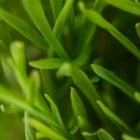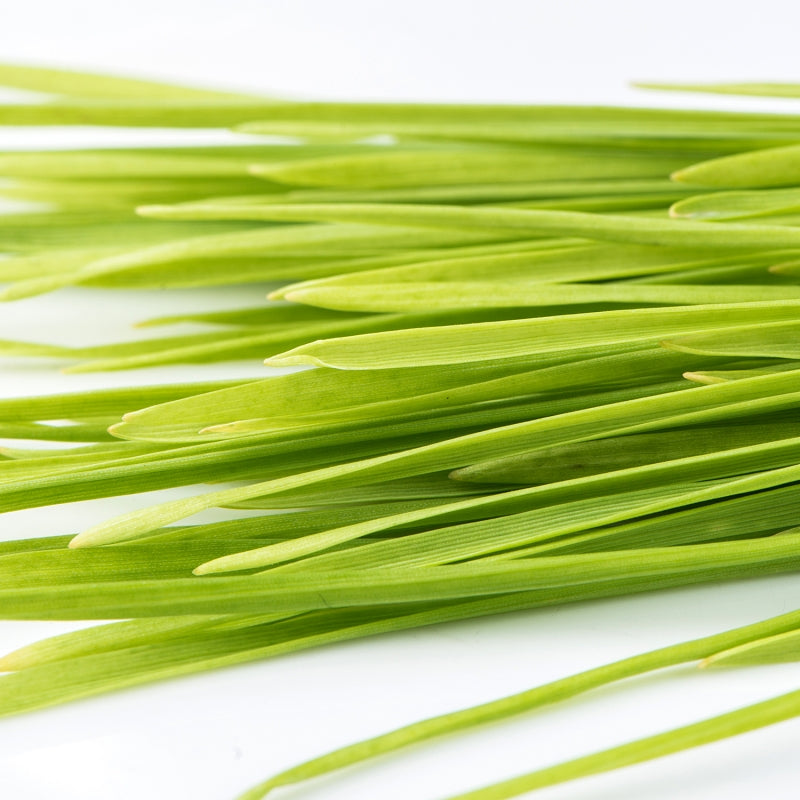Wheatgrass microgreens
Wheatgrass microgreens
Couldn't load pickup availability
Wheatgrass microgreens are the young, tender shoots of the wheat plant, harvested when the leaves are still in their early growth stage. These microgreens offer a concentrated dose of nutrients and are known for their vibrant green color. Here's some information about wheatgrass microgreens:
Who can eat wheatgrass microgreens?
Wheatgrass microgreens are generally safe for most people to consume. However, it's advisable to consult with a healthcare professional if you have specific health conditions or concerns. Additionally, individuals with gluten intolerance or celiac disease should opt for gluten-free wheatgrass microgreens.
Benefits of wheatgrass microgreens:
1. Nutrient powerhouse: Wheatgrass microgreens are highly nutritious, containing a rich blend of vitamins, minerals, and antioxidants. They are particularly abundant in vitamins A, C, and E, as well as iron, magnesium, and chlorophyll.
2. Detoxification support: These microgreens are often associated with potential detoxifying properties. They may aid in cleansing the body by supporting liver function and promoting the elimination of toxins.
3. Immune system boost: The nutrient profile of wheatgrass microgreens, including vitamins and antioxidants, can help bolster the immune system and enhance its ability to fight off infections and diseases.
4. Potential anti-inflammatory effects: Wheatgrass microgreens contain certain compounds that exhibit anti-inflammatory properties. Regular consumption may help reduce inflammation in the body.
How to consume wheatgrass microgreens:
Wheatgrass microgreens are typically consumed as a juice or added to smoothies, although they can also be enjoyed in salads or as a garnish. Here are some common methods of consumption:
1. Wheatgrass microgreens juice: Harvest the wheatgrass microgreens and extract the juice using a juicer or blender. The juice can be consumed on its own or mixed with other fruits and vegetables for added flavor.
2. Wheatgrass microgreens powder: If you prefer a more convenient option, wheatgrass microgreens are available in powdered form. Add the powder to smoothies, juices, or water, allowing for an easy way to incorporate their nutritional benefits.
When it comes to feeding wheatgrass microgreens to pets, it's important to exercise caution and consult with a veterinarian before introducing any new food into their diet. Here are some considerations:
1. Cats: Some cats are attracted to wheatgrass and may enjoy chewing on it. Wheatgrass can act as a natural source of fiber and may help with digestion in cats. However, not all cats tolerate wheatgrass well, and some may experience gastrointestinal upset. It's essential to monitor your cat's response to wheatgrass and ensure they do not consume excessive amounts.
2. Dogs: Wheatgrass microgreens are generally safe for dogs to consume in small amounts. However, dogs have different dietary requirements compared to cats, and wheatgrass should not replace their balanced diet. Some dogs may have no interest in eating wheatgrass, while others may enjoy chewing on it as a form of enrichment. Again, it's important to observe your dog's response and avoid overfeeding.
3. Other pets: For other pets such as rabbits, guinea pigs, or small rodents, wheatgrass can be a healthy addition to their diet. These animals often enjoy nibbling on fresh greens, and wheatgrass can provide a source of enrichment and some beneficial nutrients. As always, it's crucial to introduce new foods gradually and observe your pet's reaction.
When offering wheatgrass microgreens to pets, ensure that the microgreens are fresh, clean, and free from pesticides or other contaminants. Avoid using any fertilizers or chemicals during the growing process. Additionally, monitor your pets closely to ensure they do not chew on any potentially harmful materials (e.g., plastic trays or pots) used to cultivate the wheatgrass.
Ultimately, the decision to feed wheatgrass microgreens to your pet should be made in consultation with a veterinarian who is familiar with your pet's specific dietary needs and health status. They can provide personalized advice and recommendations based on your pet's individual requirements.
Share



